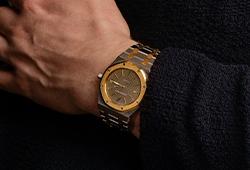Carl Larsson
"Havreskärning I"/"Havreskörd I" (Oat harvest I)
Signed C.L. within a circle and dated 1915. Watercolour 70 x 100 cm.
Provenance
Fritzes Kungl. Hovbokhandel, Stockholm (according to note in Carl Larsson's ledger sold through Fritzes in 1916 for SEK 2,500); Managing director C. Eiserman, Borås, Sweden; private collection.
Exhibitions
Liljevalchs Konsthall (Liljevalchs Public Art Gallery), Stockholm, "Invigningsutställning. Larsson-Liljefors-Zorn", March-April 1916, no. 120.
Literature
Ernst Malmberg, "Larsson-Liljefors-Zorn. En återblick", 1919, mentioned p. 38 and illustrated in interior photo from the exhibition; Ulwa Neergaard, "Carl Larsson. Signerat med pensel och penna", 1999, illustrated in colour p. 540 and listed in the catalogue under year 1915, p. 159, no. 1634.
More information
.
Artist
Carl Larsson is considered one of the greatest Swedish artists of all time. He was born in Gamla Stan in Stockholm and studied at the Royal Academy of Arts in the years 1866-76. After his studies in Stockholm, he traveled to France and settled in Grèz-sur-Loing. There he mainly painted garden motifs. In France, he met his future wife Karin Bergöö, who was also an artist and came to mean a lot for his artistry. Already during his student years, he made a living as a photo retoucher and cartoonist in the press. It was also during his studies that Larsson got to know Anders Zorn and Bruno Liljefors, together the three are usually called the ABC artists. At the end of the 1880s, Carl and Karin were given "Lilla Hyttnäs" in Sundborn outside Falun by Karin's father, and this is where Larsson's most famous watercolors depicting his family were created. The motifs often depict sunny landscapes with children, crayfish fishing, meals in the green and interior scenes. Larsson is represented, among other, in the National Museum, where "Gustav Vasas intåg i Stockholm" and "Midvinterblot" fills the stairwell. Represented mainly at the National Museum in Stockholm and at the Gothenburg Art Museum.
Read more























